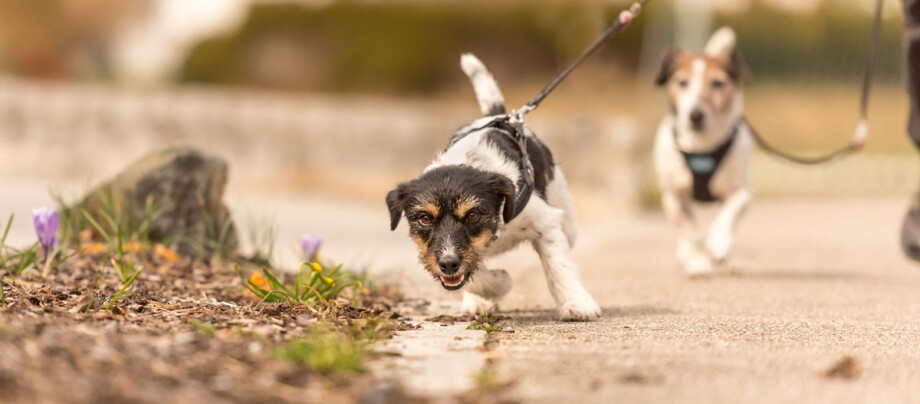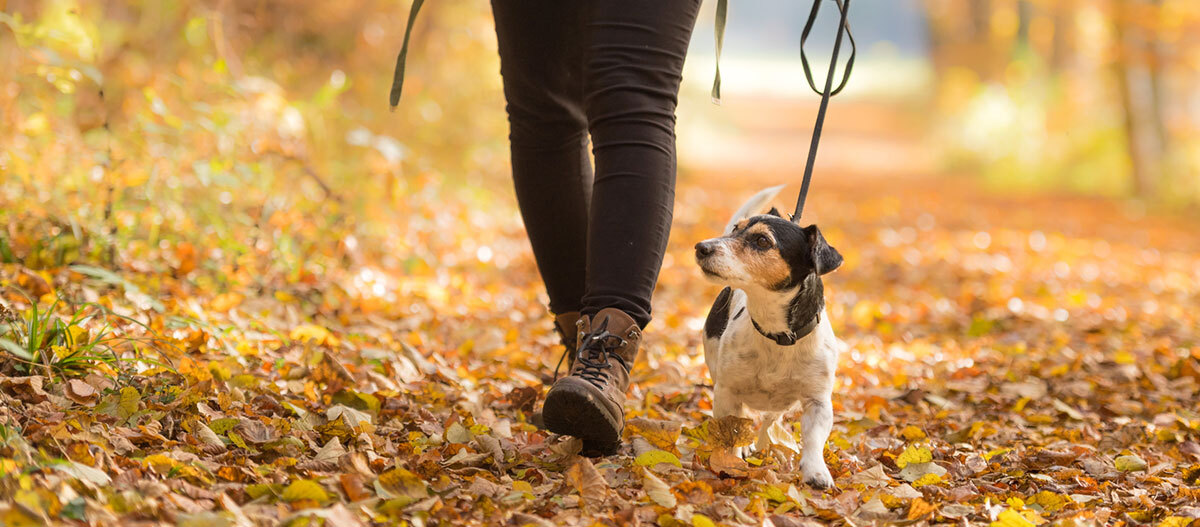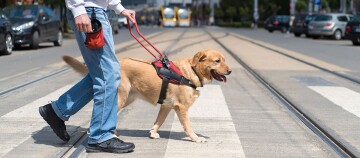Reasons Dogs Pull on Leash - Helpful Exercises for Your Next Walk
07.10.2022 - Reading time: 6 minutes

Does your dog pull on their leash? Many dog owners share this problem. Pulling on the leash isn’t just troublesome for us, dogs suffer from it too. The problem can usually be found at both ends of the leash. Find out about the reasons behind it as well as helpful exercises for your next walk here.
Why does the dog pull on its leash?
Walking on a leash is an unnatural process for dogs. Dogs are territorial and social animals that need free movement. They want to find out about other members of their species, renew their scent marks, meet other dogs and, above all, follow their natural urges. They want to move freely, romp, play, and they like to do all that together with you. For this reason, a leash can be very obstructive.
The owner also makes his mark: in fact, the reality of many walks is dismal. Many dog owners complete them as a pure duty. The rounds are short, always the same and there are sometimes too few stimuli which the dog is allowed to pursue or only the business is taken care of. Games or challenges hardly ever take place.
If a strong dog permanently pulls on the leash, walking is then hardly fun. The dog quickly understands that pulling on the leash can lead to success. “His human” now walks faster or the dog reaches interesting scent marks or other interaction targets without being pulled away. Over time, pulling becomes a normal situation for the dog, if not a necessity. The dog owner, on the other hand, turns into a “buzzkill” who simply has to be “pulled” somewhere along and otherwise hardly plays a role.
Dog pulling on the leash: How to break the habit?
The first step in training against leash pulling is to make the walk attractive for you and your dog. Therefore, take time for at least one long walk every day and define yourselves as a team. If your dog listens to your call, plan a stop with a free run. Play with him extensively. Ball or search games, fetch, balancing… there are no limits to your creativity! Find out what your dog enjoys.
Exercises and tips for pulling on the leash on every walk
The goal of the exercises is to make your dog understand that pulling on the leash does not lead to success. At the same time, your dog should learn that it is worthwhile to pay attention to you.
Exercise 1: Work with a reward
Show your dog his favorite toy or a treat and hold it just in front of your chin. Give the command “Heel” while walking a few steps. As soon as the dog looks up at you and follows, reward him. Keep asking for his attention.
Exercise 2: Stubbornness against pulling
Stand frozen as soon as your dog pulls on the leash. Look in another direction and don’t pay attention to your dog. If the dog stops pulling, call him to you and reward him.
Exercise 3: Change direction
As soon as your dog pulls on the leash, change walking direction abruptly and demonstratively. Pull clearly on the leash without tugging on the dog. If your dog overtakes you and pulls on the leash again, change the direction again. This exercise also redirects the dog’s attention to what you are doing and usually considerably reduces pulling.
Important tips: End every exercise, even a walk that didn’t go very well, with a sense of accomplishment for your dog. Rather than using a collar, use a harness that fits well and doesn’t pinch anywhere. However, you should keep in mind that large dogs will have even more traction with a harness. For smaller dogs, the harness is a good choice. You can read more exercises and tricks in the guide to leash walking.
Curious opinions and questionable methods
Curious views about a dog’s nature still lead to questionable methods that torment dogs. Fortunately, they are increasingly refuted by cynologists. However, the following misconceptions stubbornly persist:
“Dogs want to take the alpha position in a human-dog pack and try to dominate, such as when they pull on the leash or lead the way.”
Not quite! The dog is basically ready to submit. However, if the human does not manage to take the lead, the dog does. The quadruped makes no distinction between a human pack and a dog pack. If he pulls on the leash, this is evidence of an inharmonious dog-human relationship.
“The dog must always walk behind me or heel.”
This is not always sensible. Many dog owners even find the dog’s approach more pleasant. So you have your dog well in view and also more space for a bag or other people on the sidewalk. The dog walking in front of you should be initiated by you, just like the walk at your heels, and should take place with a slack leash.
“Prong or choke collars break the dog’s habit of pulling on the leash.”
Wrong. A dog that has already gotten into the habit of pulling on the leash will accept the choking and stabbing as a “necessary evil.” After initially being irritated by it, he will resume his habit.
“If the prong collar doesn’t help, more drastic methods are needed.”
This is disastrous. Whoever beats a dog, yells at it or “experiments” with electric shocks and halters destroys the dog both physically and psychologically.
Dog pulls on the leash: aids
Pronged and choke collars and even more so electric shockers or collars that emit a high pitched sound or water are basically instruments of torture for the dog. Stun guns and their variants have been proven to cause irreparable psychological damage to dogs.
Halters, on the other hand, are common and effective for exercise purposes, but belong in the hands of an experienced dog trainer. If used improperly, halters can cause lasting distress to dogs, trigger panic attacks, and lead to postural damage and painful muscle tension.
Dog pulls on the leash: nothing helps
If there is no success after a few solo training phases with your dog, it is advisable to go to a dog trainer. From an objective point of view, mistakes in your communication or body language can be identified more quickly and helpful steps can be taken. With this, it will surely work out with a harmoniously connected human-dog team.



